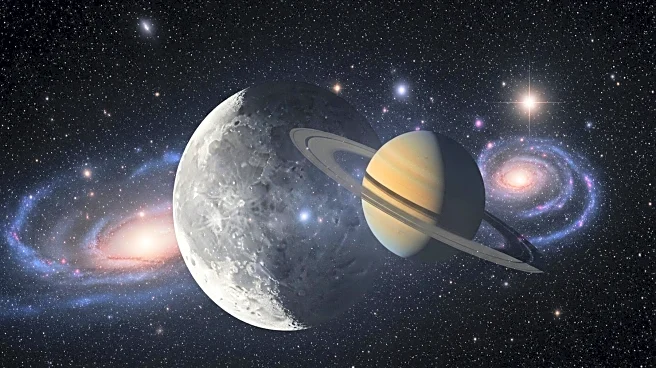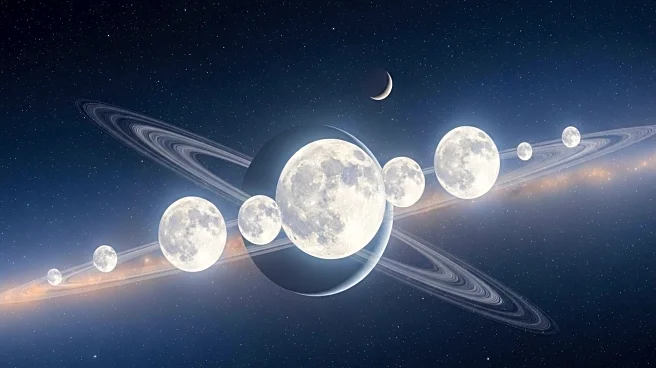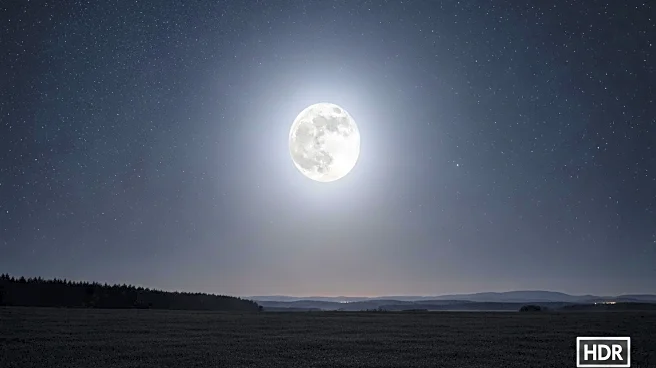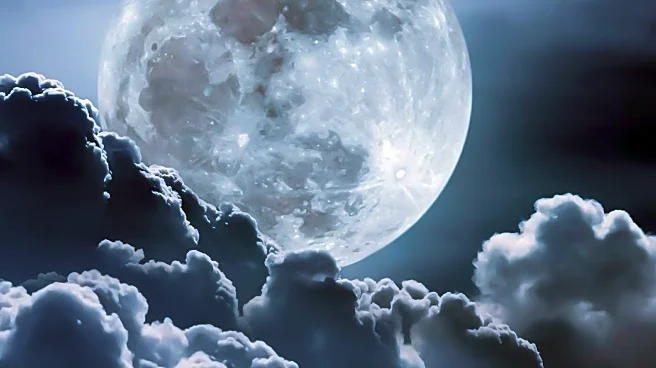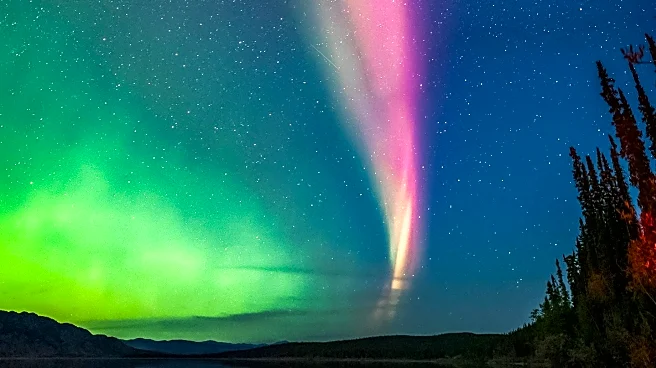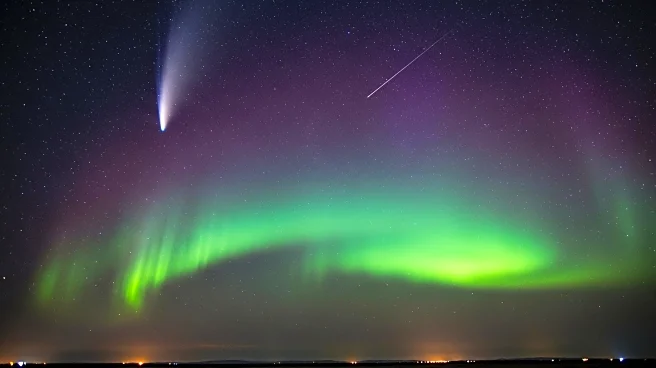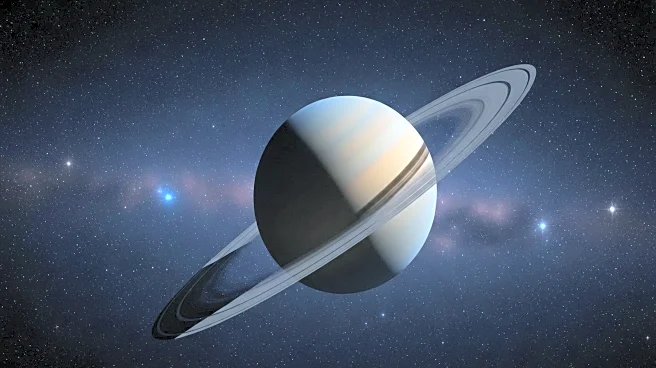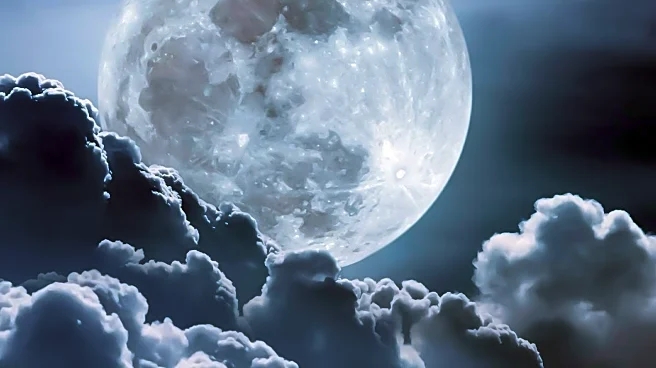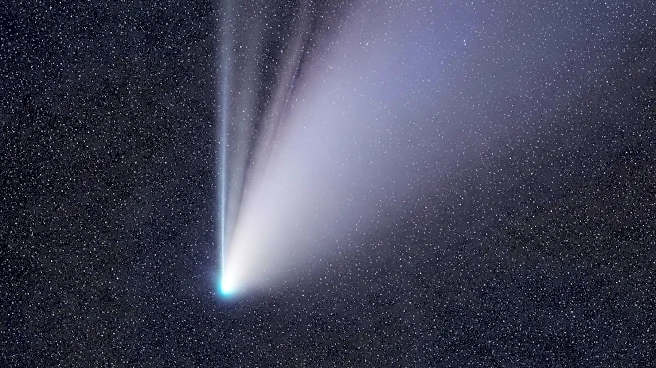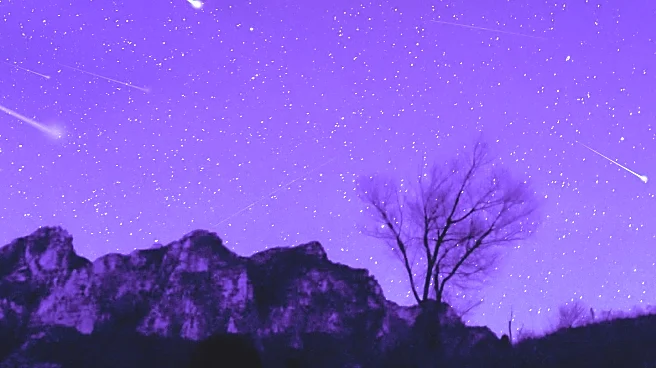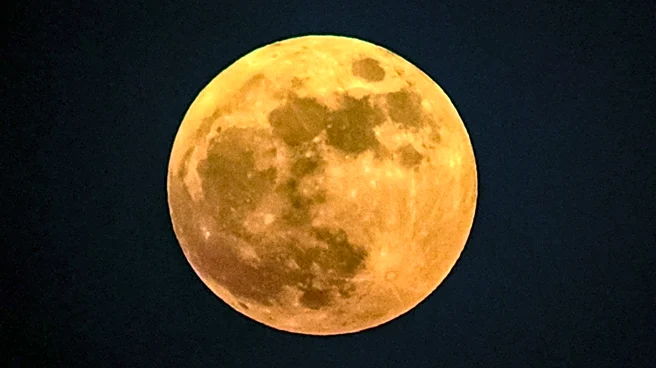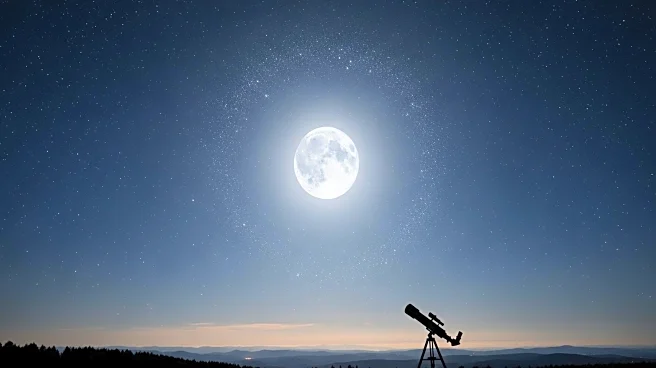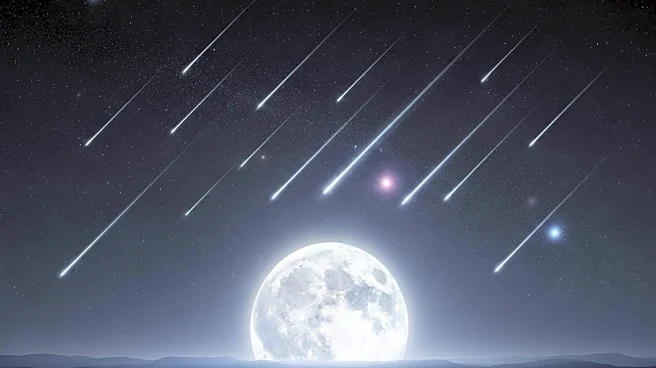What is the story about?
What's Happening?
On October 5, Saturn will appear close to the nearly full moon, creating a striking visual display in the night sky. This event provides an excellent opportunity for skywatchers to observe Saturn, often considered the most beautiful telescopic object due to its iconic rings. The moon, nearly full at 98.5% illumination, will help guide observers to Saturn, which will appear as a bright yellowish-white 'star' in the east-southeast sky. The rings of Saturn, though currently appearing as a narrow line due to their inclination, remain a captivating sight through a telescope.
Why It's Important?
The conjunction of Saturn and the moon offers a chance for both amateur and seasoned astronomers to engage with the night sky. Such events can foster public interest in astronomy, encouraging educational outreach and community engagement. Observing Saturn's rings, even in their current narrow state, can inspire awe and curiosity about the solar system's dynamics. This celestial event also highlights the importance of preserving dark skies, as light pollution can diminish the visibility of such astronomical phenomena.
What's Next?
As Saturn's rings gradually become more visible over the coming years, interest in observing the planet is likely to increase. Astronomy clubs and observatories may host viewing events to capitalize on this interest, providing telescopes and guidance for the public. Educational programs can accompany these events, offering insights into the science of Saturn and its rings. The ongoing observation of Saturn will contribute to our understanding of planetary systems and the mechanics of ring formation and evolution.
AI Generated Content
Do you find this article useful?
